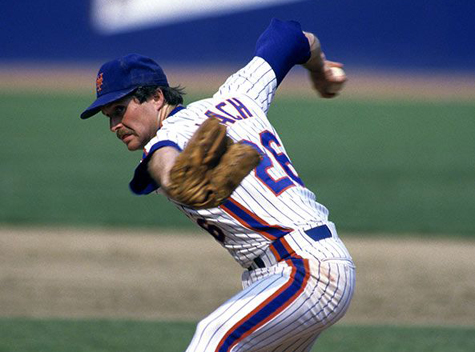
A baseball roster is an endlessly fascinating construct. Some evince an enviable degree of stability, featuring a core of players whose consistency and above-average level of play provide little reason to team management to seek alternatives.
Others go through larger and more frequent levels of turnover as the search is made for the right combination of elements that can push a team into contention. In drawing those elements together, most general managers work with variations of a similar palette: a “star” (or perhaps “superstar”) contingent, established major league regulars, a sprinkling of young, rising talent, and the category that tends to fill in any gaps in the master plan- journeymen.
These are the players on the fringe, generally tapped for their experience and ability to provide a reliable, if not All-Star level of play. Their place on the roster is best encapsulated by the word tenuous, as they exist in a world of one-year contracts, non-roster spring training invitations, DFA’s and waiver claims. They generally know the bus routes of the PCL and International League as well as anyone and have ridden the shuttle between the upper minors and the Show like they were commuters. Yet they provide the glue that holds many teams together; subtract their steady if unspectacular contributions and you may lose that slight edge that skews a won/lost record in the right direction.
From a pitching standpoint, the “swingman” perhaps best represents the value a journeyman brings to a team. Esteemed for their flexibility, these are the arms that provide the safety valve when something goes amiss with an otherwise properly constructed rotation and/or bullpen. If a starter gets shelled early on, here comes the longman to hold the fort and give the offense a chance to get the team back in the game. If a rainout necessitates a doubleheader, guess who gets tapped to start a game on short notice? Not a glamour job, to be sure, but done well, it is a stealth component in many a successful season.
Terry Leach may have set a benchmark for swingman performance during his tenure in a Met uniform. Over the course of two go-rounds with the Flushing crew encompassing parts of seven big-league seasons, he consistently delivered quality relief innings and spot starts when called upon. And yet, for the majority of his career (which included stints with the Braves, Twins, Royals, and White Sox organizations in addition to the Mets), he found himself bouncing between the Bigs and the minors, serving as insurance in the event of injury or lack of performance on the part of those deemed more worthy of a regular spot on the varsity. This despite numbers that would generally be described with adjectives like “stellar” or “outstanding” during the bulk of his minor league service. Over the course of stints spanning 12 seasons in the bushes, Terry compiled a Won/Loss record of 61-37 (for a .622 winning percentage) to go with an ERA of 2.89, and racked up 16 complete games in 44 starts including four shutouts.
In 1987, the Mets were coming off the glory of the championship run of the prior year but were hamstrung in their drive to repeat by injuries to much of the mound staff including Bob Ojeda, Sid Fernandez, Rick Aguilera, David Cone and Ron Darling. In addition, the team saw key bullpen component Roger McDowell sidelined for weeks by a hernia and most ignominiously, suffered the loss of ace Dwight Gooden for a third of the season due to his testing positive for cocaine and subsequently being admitted to rehab during spring training.
Despite this avalanche of pitching misfortune, the team won 92 games that season and battled for the division lead into the second week of September thanks in no small part to the contributions of a certain submarining right-hander name Leach.
Appearing in 44 games that year including 12 starts, Terry delivered a sparkling 11-1 record to go with a highly respectable 3.22 ERA. The high point of his season came on July 2nd when he delivered a complete game, 2-hit shutout against the Reds at Riverfront Stadium. Despite his yeoman performance that year, the Mets were unable to overtake the St. Louis Cardinals for the division crown and finished three games back in second place.
The following year saw the Mets dominate the league on their way to a division championship. Leach worked strictly in relief that season, compiling a 7-2 record and 3 saves to go with a stingy 2.54 ERA. In the NLCS against the Dodgers, he tallied another 5 scoreless innings in what would eventually prove a losing effort.
To find Terry’s magnum opus however, it is necessary to turn the clock back a bit to 1982. On October 1 of that year, the Mets were three games from the end of what had been a dismal season that would see them finish 32 games under .500. In Philadelphia for a season-ending series, manager George Bamberger (he of the fabled “Staten Island sinker”) was tasked with finding a replacement for the day’s scheduled starter Rick Ownbey, who had suffered a blister on his pitching hand.
Leach was tapped to make what would be only his second career start and responded with a tough, stymying performance that would make team history. Matched up against John Denny, a late season acquisition by the Phils that year, Terry held the opposition hitless until the 5th inning when he surrendered a one-out triple to Luis Aguayo. He was able to induce a grounder to third by the next batter, Ivan DeJesus, and struck out Denny to end the threat.
Meanwhile, the Mets were faring no better on offense for their part, managing only a harmless single by first sacker Dave Kingman to lead off the 2nd. The teams matched zeroes until the top of the 10th when, with Denny finally pulled in favor of reliever Porfi Altamirano, Kingman walked and was pinch run for by Rusty Tillman. Right fielder Gary Rajsich then singled for only the third hit of the day by both teams combined, and Tillman scampered home on a sac fly by Hubie Brooks. Terry took the mound for the bottom of the inning and, following a walk to Aguayo (Leach’s 6th free pass of the day), retired the next three batters to complete a 10-inning, one hit, shutout victory, a rare occurrence indeed, and one that remains unique in the annals of Mets achievements.
Despite his flashes of brilliance, team management remained unconvinced by Terry’s performances and traded him away not once but twice, in 1983 to the Cubs and again in 1989 to the Royals. Perhaps it was his unconventional delivery, a swooping submarine motion that made it appear as if his knuckles would scrape the mound at its mid-point. Perhaps it was just his own ability to shuttle between roles as readily as he did, lending his place on the staff a somewhat undefined quality. In any event, there were many occasions when one could have asked, as announcer Tim McCarver did numerous times in 1987, “Where would the Mets be without Terry Leach?”














